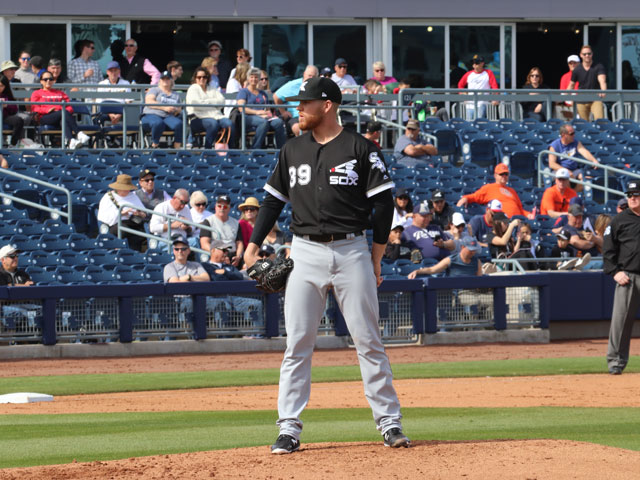What is the Meaning of WHIP in Baseball?
WHIP is an acronym that stands for Walks and Hits per Innings Pitched. It is one measure of a pitcher’s effectiveness on the mound. It gives a general, high-level view of what’s going on and whether or not a pitcher is throwing quality innings.
| Read: 3 min

WHIP doesn’t include errors or the quality of the hits being produced, such as doubles, triples or homers, so there is some wiggle room for interpretation with regard to how much WHIP really matters.
But as far as general baseball statistics go, WHIP is a decent one to track. So let’s get into the history of WHIP, how it’s used, and who some of the all-time leaders are.
Let’s calculate WHIP
WHIP is used not only in the analytical data of MLB teams, managers and statisticians, but also in the wide world of rotisserie/fantasy baseball. Past pitcher’s performance will dictate where most people draft them for the upcoming season. But how many people really know how to calculate WHIP?
According to Major League Baseball, WHIP is, “... the sum of a pitcher's walks and hits, divided by his total innings pitched.”
More walks or hits? Higher WHIP. Same goes for the reverse, less walks or hits, Lower WHIP. Once again though, the stat doesn’t take Slugging into account.
It does, however, factor batters that are Hit-By-Pitch (HBP) into the equation, as it’s treated the same way as a walk, despite the different designation.
Best All-Time MLB WHIP Seasons
Here is a list of the pitchers with the best single-season WHIP stats in baseball history. Interestingly enough, only Pedro Martinez of the Los Angeles Dodgers, Montreal Expos, Boston Red Sox, New York Mets, and Philadelphia Phillies appears on both the single-season list and the all-time career leader list.
- Pedro Martinez
- Kenta Maeda
- Guy Hecker
- Walter Johnson
- Trevor Bauer
- Tim Keefe
- Justin Verlander
- Addie Joss
- Hilton Smith
- Satchel Paige
What is a Good WHIP rating?
The absolute best of the best are as close to 1.0 as possible, with three of them going under it. Unlike OPS, you want your WHIP rating to be below 1.0 if possible. Considering that Major League Baseball just fielded it’s 20,000th player last year and only three have achieved a WHIP below 1.0, it’s truly the exception and not the norm. But remember, that’s for a career.
Realistically speaking, a sub 1.0 WHIP for a season is an excellent mark. It means you’ve let less baserunners on than the total number of innings pitched. A pitcher with a sub 1.0 WHIP is straight up dealing and keeping hitters off-balance with an array of high heat and breaking pitches.
All-Time Major League Baseball WHIP Leaders
A low WHIP rating generally means that a pitcher has excellent command as well as excellent pitches. As to the latter, you could also use filthy, as in Clayton Kershaw has a filthy curveball. You could even call it ol’ Uncle Charlie.
You’ll notice that this list consists primarily of starting pitchers. There are a couple of closers in there, too. What you don’t see is middle relievers. It’s probably because starters can get into a groove and smooth out any mistakes over the course of a season/career.
Nor should it be a surprise that these pitchers hand out strikeouts to opposing batters like candy on Halloween. Their pitching statistics, from a career perspective, are truly excellent.
One thing that makes us laugh is that Hall of Fame pitcher, Cy Young, whom the best pitcher award is named after, has neither a Top 10 single-season WHIP performance, nor an all-time career performance to his name. And it’s not like the stat employs some sort of new age sabermetrics, no, WHIP measures two stats, the number of walks and the number of hits, that have been measured forever.
Addie Joss leads off the list with the lowest WHIP of all-time. Here are the rest.
- Addie Joss
- Jacob deGrom
- Ed Walsh
- Mariano Rivera
- Clayton Kershaw
- Chris Sale
- John Ward
- Pedro Martinez
- Christy Mathewson
- Trevor Hoffman
WHIP vs ERA
The thing that both stats have in common is that they both work within an innings pitched ratio. ERA stands for Earned Run Average. Earned Run Average is calculated by the total amount of innings pitched against the total runs scored, where the runs in question were the result of the pitcher getting on base via a hit, walk, or hit-by-pitch and that runner coming around to score during that inning.
Where WHIP deals with walks plus hits, ERA deals with runs scored. For example, a pitcher could theoretically possess a 3.0 WHIP and a 0.00 ERA.
Is it likely? Absolutely not. Could it happen? Sure.
That scenario would involve some sort of baseball magic in the form of fielder’s choice plays, double plays, triple plays, and perhaps most importantly in today’s golden age of the three true outcomes, a severe drought on home runs. And we all know that just ain’t happening during your average baseball game in 2022.
Wrapping Up
A pitcher’s WHIP, while important to review, is not the end all, be all of pitching quality. Plenty of pitchers have had great careers with an average WHIP. It just meant they worked even hard once they had a few baseball players running around on the base paths and thus managed to keep them out of the run column in the box scores.